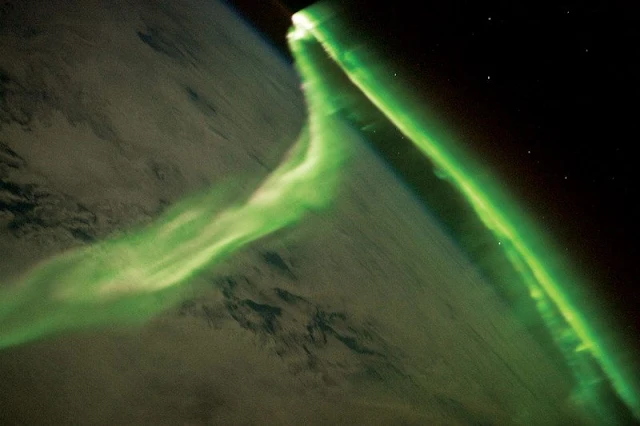The Paradox Powering Earth’s Magnetic Field
 |
| Earth Science and Remote Sensing Unit, NASA Johnson Space Center |
Our planet’s protective force field appears to be billions of years older than the mechanism that got it going. So what really made Earth magnetic?
IT IS Earth’s silent defender. Without it, a constant onslaught of charged particles would bombard our planet’s atmosphere, changing its chemistry and disrupting our electronic infrastructure. Assuming any of that stuff was even there to disrupt. In Earth’s infancy, our guardian may have prevented the sun’s action from stripping away the protective bubble of gas surrounding our planet entirely, and so allowed life – and eventually intelligent life – to flourish.
This silent defender is Earth’s magnetic field, a force field whose source lies in the churning molten iron that forms the planet’s core. Electrons flowing through this fluid generate an electric current, which in turn creates a magnetic field. The core is a giant, self-sustaining electromagnet: a dynamo.
That’s been the general story for decades. But over the last few years, it has run into a problem. Evidence is mounting that the dynamo could only have emerged comparatively recently. At the same time, geological clues show that the magnetic field has existed for most of Earth’s 4.5-billion-year history. This contradiction – an ancient magnetic field without anything to power it – is forcing us to rethink our planet’s insides.

%20(1).webp)






